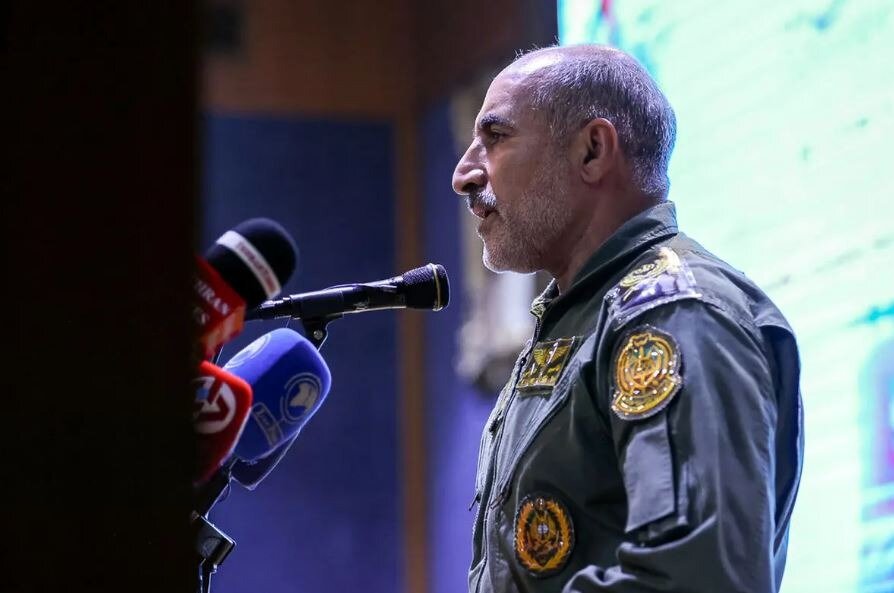Army Aviation still stands guard 43 years after Khorramshahr’s liberation, cmdr. tells Tehran Times

TEHRAN – Iranians call the eight-year war against Saddam Hussein’s Iraq the Sacred Defense. For them, it was a time of immense hardship but also great pride. Thousands lost their lives fighting against Saddam’s forces, which were far better equipped and backed by major military powers, including the United States, the UK, and Germany.
One of the most pivotal moments of the war was the liberation of Khorramshahr—an event that remains deeply ingrained in Iran’s national identity and still holds valuable lessons today. After a fierce and bloody battle, Iranian forces retook the city on May 24, 1982, during Operation Beit ol-Moqaddas, two years after its occupation. The victory marked a major turning point in the war and lifted the nation’s morale. To this day, Iran commemorates the date as a symbol of resistance and triumph.
A key player in Khorramshahr’s liberation was the Army Aviation unit. After a Saturday ceremony where some of the pilots of the Beit ol-Moqaddas battle were brought to the stage and honored, The Tehran Times managed to interview Second Brigadier General Qassem Khamoushi, the commander of the Islamic Republic of Iran Army Aviation. The commander expounded on how his forces continue to play a vital role in Iran’s military and security strategy, 43 years after their heroic efforts in Khorramshahr.
Below is the full text of the interview:
Army Aviation played a crucial and significant role during the Sacred Defense. Given the evolving nature of modern warfare, how do you see your role and mission fitting into the country's defense strategy?
The measures taken by the Army Aviation during the eight years of the Sacred Defense were carried out by our personnel per the conditions of that time. However, the threats today have changed. The threats we face now are not the same as those from 45 years ago. Thus, we have both modernized our equipment, which is crucial, and updated the training of our personnel. This includes training programs that ensure the effective presence of pilots and engineers, as well as training that addresses contemporary threats. We have integrated the experiences of the eight-year Sacred Defense with modern training to ensure that our personnel can effectively confront today’s threats.
How would you describe the current state of Army Aviation's equipment? How modern is your fleet?
We have successfully localized precision-guided and long-range missiles for the Army Aviation. In light of the unjust U.S. sanctions against Iran, we recognized the need to produce helicopter consumables domestically, and we have made significant progress in manufacturing components using our own capabilities and innovative solutions.
During the Sacred Defense era, Army Aviation helicopters could only operate during the day. Now, thanks to the integration of night vision systems and the localization of components, we can conduct operations even in complete darkness.
Furthermore, the range of our missiles has increased more than sevenfold, and our missile systems have been upgraded for improved precision and accuracy. In the coming days or weeks, we will showcase important advancements in component manufacturing and the operational needs of our helicopters.
In addition to military operations, the Army Aviation also undertakes various non-military missions during peacetime, especially in response to natural disasters. Could you share some insights about these missions?
During peacetime, Army Aviation dedicates a portion of its resources to serve the people in times of need. Given that our country is disaster-prone, experiencing earthquakes, floods, and wildfires, Army Aviation has actively participated in all such emergencies. In recent years, we have responded to every major earthquake in the country.
Most notably, the Sar-e Pol-e Zahab earthquake, where we conducted over 450 sorties in a single day, evacuating all injured and affected individuals from the disaster zone via helicopters. During floods, such as those in Lorestan and Khuzestan in 2019, as well as the more recent Golestan flood, Army Aviation has consistently been among the first units to deploy, proudly serving the public.
Today, we also operate aerial emergency services covering most provinces across the nation. Our helicopters are stationed in key locations, particularly in remote and hard-to-reach areas, to ensure emergency medical response. In 2024, we reached a record-breaking 1,600 hours of emergency flight operations, which is unprecedented in scope and impact.
Leave a Comment